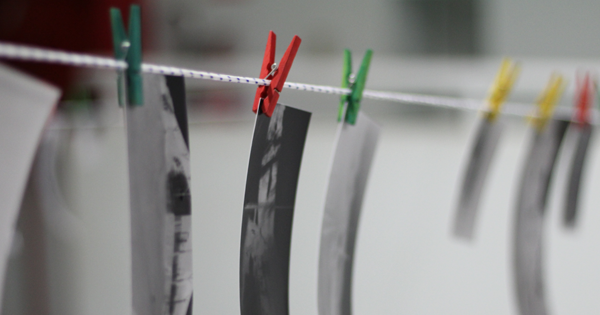
What to do after a flood
Steps you can take to dry water-damaged precious personal and collection items. Water and mould can all badly damage collection materials. While a damaged item may never look new again, it is possible to preserve what remains if you act quickly.
Care for your personal health and safety
All items should be considered as potentially contaminated by floodwaters, so wear gloves, masks and other protective gear when handling them.
Take photos and make a plan of action
Take lots of photos to record and document for insurance purposes and then make a plan of action. That includes finding a safe place to remove items for drying out and cleaning.
Source any fans and dehumidifiers for the job.
Beware of mould
Paper, books, photographs and digital materials are all at risk of water and mould damage.
Residual water and damp conditions increase the humidity that allows mould to become active – this is one of the reasons why it’s important to find a space that is dry, with circulating air.
Handle wet materials carefully
Wet items need to be handled gently and supported underneath when picked up or moved to prevent further damage.
Recommended methods of recovery
The recommended methods of recovery, in order of preference, are:
1. air-dry photographs immediately
2. freeze, thaw, air-dry
3. freeze dry (seek advice before using this option)

Miramar student Chester Young standing on his waterlogged floor inside the living room of his flood-damaged house in Ira Street, 1998. Ref: EP/1998/1539/11-F. Alexander Turnbull Library.
Deal with water-damaged photographs first
Water-damaged photographs should be dealt with first.
Avoid touching the surface of photographs as the water may have made the image layer soft.
If photographs are dirty they can be rinsed gently in clean, cold water. It is very important to keep identifying information with each item to avoid confusion later.
Air-dry items on clean absorbent paper (e.g. blotting paper, unprinted newsprint, paper towels). The image side must be uppermost during drying.
Do not touch the image side of wet photographs it will be very soft and vulnerable. Never allow the image side of photographs to dry in contact with anything else, as they will stick together permanently.
If the image layer on glass negatives is physically sound they can be propped up, image side uppermost, on their long edge to dry. Broken or damaged glass negative should be dried flat on absorbent paper, image side uppermost.
Film negatives can be carefully hung from a line to dry. Do not allow them to come into contact with each other as they dry.
Some film negatives in poor condition may not be able to be saved. If they look damaged or deteriorated dry them flat on absorbent paper, image side uppermost.
Books
If still intact, books can be stood up, fanned out and air-dried.
Buy time by freezing items
Books, papers and photographs can also be frozen – this can buy you time and allow you to deal with your items in smaller lots when you have time and space to do the work.
You can freeze wet photographs if you can’t air-dry them immediately. Place them in easy-to-handle batches inside sealed plastic bags, then freeze. Interleaving the items with greaseproof paper is preferable as they will be easier to separate in the future. These items can stay frozen indefinitely.
When you are ready to deal with the items defrost only as much as you can handle in one day. Gently separate thawed items taking care not to allow them to dry before they are separated. Dry using the methods outlined above.
Get in touch
In case of emergency, act quickly. Contact us for advice in protecting your collections from damage caused by fire, flood, earthquake, mould or pests.
Email — preservation@dia.govt.nz
Resources and checklists
Drying your whānau collections — checklist — A short checklist to help you safely dry water-damaged belongings such as photographs, books, artworks and music collections after a flood.
Collection salvage guidelines — Guidelines. including do's and don'ts. to help you dry water-damaged belongings, organised by format.
Curated list of flood recovery resources — Resources for recovering items damaged by flood from reputable sources, including a link to information about caring for marae and urupā after floods.
Feature image at top of page: Detail from photo of flooding outside the shop of Duncan McLean, Greymouth, ca 1907. Ref: 1/2-044532-F. Alexander Turnbull Library.
